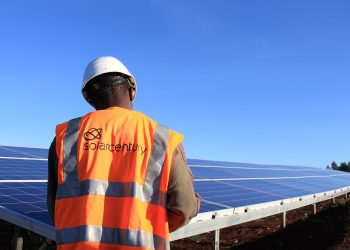
The International Energy Agency (IEA) says Namibia spent approximately US$5 billion (N$87 billion) on electricity in 2023, marking a 25% increase from US$4 billion (N$70 billion) in 2019.
This sharp rise in costs stems from both currency depreciation and a shift in import sources, as NamPower, Namibia’s power utility, relied heavily on foreign power to meet growing domestic demand.
The IEA’s findings reveal that Namibia’s imported electricity expenditure has more than doubled over the past four years, climbing from US$800 million (N$14 billion) in 2019 to over US$1.8 billion (N$32 billion) in 2023. Yet, while spending soared, the actual volume of imported electricity fell, underscoring the impact of increased import prices and currency fluctuations.
One of the main factors driving up Namibia’s electricity import costs has been the depreciation of the Namibian dollar against the US dollar, the currency in which most power contracts are priced.
“More than 80% of Namibia’s electricity imports are through bilateral contracts with neighbouring countries, all denominated in USD,” read part of the IEA report.
“Although imported electricity volumes decreased from 3,042 GWh in 2019 to 2,750 GWh in 2023, the US dollar’s appreciation by nearly 20% over this period drove up costs in NAD terms.”
Adding to these challenges is Namibia’s recent shift in power sourcing.
Traditionally, Namibia had sourced a significant portion of its electricity from South Africa, where prices are relatively low. However, since the commissioning of the TransCaprivi Interconnector in 2021, Namibia has ramped up imports from Zambia and Zimbabwe, where power comes at a higher cost.
“Namibia’s reliance on imported electricity has far-reaching implications for energy security and affordability,” the IEA reported, noting that NamPower’s cost-reflective rates are some of the highest in sub-Saharan Africa.
In fact, Namibian end-users have faced a 30% hike in electricity prices since 2016, with rates climbing from NAD 130 cents/kWh to NAD 170 cents/kWh by 2022. This increase reflects the mounting import costs that NamPower has had to pass on to consumers to remain financially viable.
Despite having 750 MW of installed domestic generation capacity, Namibia’s dependence on imported electricity remains one of the highest in Africa. Hydropower constitutes the bulk of Namibia’s generation capacity (347 MW), supplemented by solar PV (171 MW), coal (120 MW), fuel oil (23 MW), rooftop solar (52 MW), and wind (5 MW). Yet, these sources have proven insufficient to meet national demand. As a result, Namibia has consistently relied on imports since the 1990s, with foreign power accounting for as much as 60-70% of supply in recent years.
The IEA report highlights how climate factors and upstream water infrastructure developments in Angola have also affected Namibia’s energy reliability.
“In 2022, generation from the Ruacana hydropower station, which relies on water from the Cunene River in Angola, fell by 20% year-on-year to 781 GWh, marking its lowest output since 1997,” stated the IEA. The diminished hydropower output, largely due to lower precipitation and upstream water management in Angola, has exacerbated Namibia’s reliance on imports to stabilize its electricity supply.
To address the growing demand-supply gap, NamPower has secured multiple bilateral agreements with neighboring countries and participates in the Southern Africa Power Pool. In 2023, these agreements led to an increase in imports by 300 GWh, helping meet Namibia’s domestic energy needs.
The IEA is a Paris-based autonomous intergovernmental organisation, established in 1974, that provides policy recommendations, analysis and data on the global energy sector. The 31 member countries and 13 association countries of the IEA represent 75% of global energy demand.







